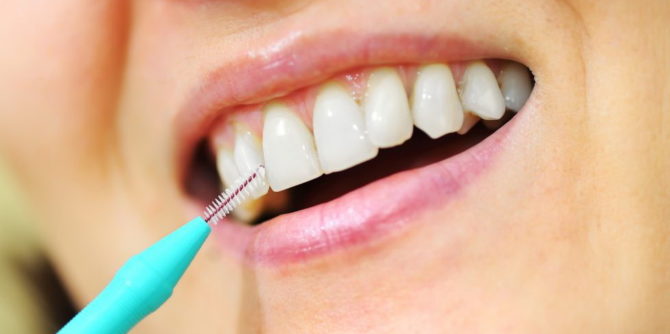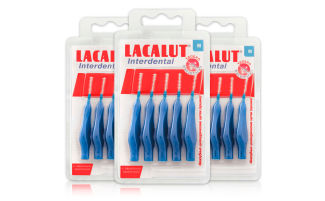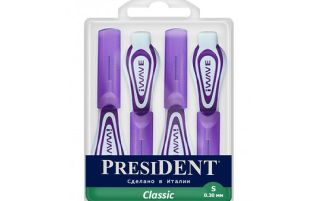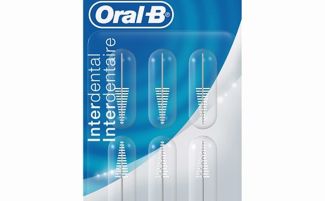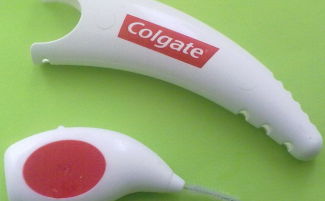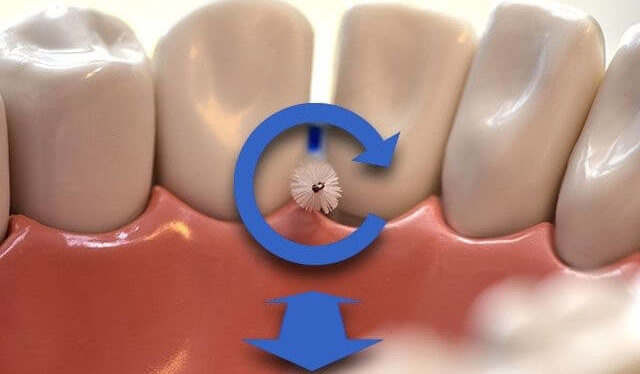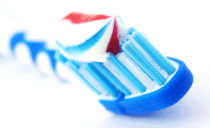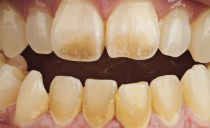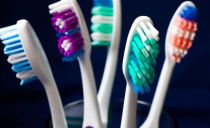Toothbrushes: how to choose and how to use
Brushes for cleaning teeth are special hygienic devices that look like brushes for cleaning baby bottles. They have an oblong shape and are equipped with numerous bristles that are perpendicular to the main axis of the products.
Content
What is a dental brush for?
People use a brush for baby bottles when they need to wash the remnants of milk from them, which could not be removed with ordinary water. The situation is similar with tooth brushes. They are used, if necessary:
- get pieces of food from the interdental spaces that cannot be rinsed with water or removed with a regular toothbrush;
- clean the back of the teeth;
- provide better oral hygiene.
There are a number of medical indications in which it is necessary to use a brush for teeth:
- wearing braces;
- the presence of dental prostheses or implants in the mouth;
- periodontal pathology;
- a large number of diastemas and three;
- crowding of teeth and their irregular shape;
- smoking and frequent consumption of coloring products;
- chronic diseases that even in a vegetative state badly affect the microflora of the oral cavity.
Classification of toothbrushes
There are 3 main types of brushing teeth:
- Curved with a semicircular rod and handle. Suitable for cleaning orthodontic structures, very well remove plaque from the locks of bracket systems.
- Cylindrical with villi of the same length. They are necessary for high-quality cleaning of wide interdental spaces, gums and the neck of the implant.
- Cone-shaped with cone or herringbone bristles and long villi at the base. Universal interdental brushes suitable for a large number of patients.
Than ruff is better than irrigator
The purity of the oral cavity can be monitored using a device such as an irrigator. It gently acts on teeth and gums, carefully removing food debris and pathogenic microorganisms. But irrigators have one significant minus - high cost. Not all patients can afford such a device. But dental brushes are cheap and affordable for everyone. Moreover, they cleanse teeth and gums no worse than expensive irrigators.
To clean the interdental spaces from food debris, many use dental floss or toothpicks, but they can damage the enamel or not completely remove the plaque. Such devices are absolutely not suitable for those who have braces, implants or ceramic-metal crowns. In the presence of the listed structures in the mouth, it is better to use dental brushes.
How to choose a brush for brushing your teeth
So that with the help of the interdental brush, it is possible to clean the interdental spaces well, it must be correctly selected. For advice on the most suitable device, consult your dentist. He will take all the necessary measurements and tell you which brush the specific patient needs.
Interdental brushes are classified by the following parameters:
- shape and length of the handle;
- shape and diameter of the nozzle;
- material of manufacture;
- length, density and stiffness of the bristles.
The length of the villi is an important parameter on which the quality of cleansing the interdental spaces depends.If the teeth in the mouth are densely or even crowded, it is better to purchase a product with short bristles (about 1 mm). If there are gaps or diastema between the teeth, it is worth stopping the choice with a device with long villi (3 mm).
The level of stiffness of the fibers determines whether gums or enamel will be damaged during the hygiene procedure. For people with sensitive teeth and implants installed, it is better to choose products with soft bristles, the rest - medium hardness.
Brush bristles are attached to a rod made of plastic or metal. A product with a plastic shaft is suitable for people with sensitive teeth, sore gums and other chronic dental diseases. With a healthy oral cavity, it is better to choose a brush with a metal rod.
Brushes vary in length. Children are better off choosing products with a short handle - marking S; for adults with a long - marking XL.
Popular brands
Compared to an irrigator, a dental ruff is inexpensive, so there is no point in acquiring the cheapest, but low-quality product. The most high-quality brushes for cleaning teeth are produced by the following manufacturers:
- Colgate: you can immediately purchase a set of ruffs with bristles of various lengths.
- Lacalyut: the products are made of a hypoallergenic alloy, the metal core is covered with special plastic, which makes it possible to use the device in the presence of removable and fixed prostheses in the mouth.
- Oral-Bi: interesting cylindrical and conical brushes, sold in special containers in which they can be stored and taken on a trip.
- President: unique curved-shaped products with a bending shaft that provides effective cleaning of hard-to-reach areas of the oral cavity.
The cost of dental ruffs varies from 250 to 500 rubles depending on the material of manufacture, size and configuration.
Photo brushes from different manufacturers
Where can I buy dental ruffs
Brushes are best purchased in specialized stores. In addition, they can be bought:
- in pharmacies;
- in online stores that focus on dentistry;
- in supermarkets.
It is better to choose large pharmacy and retail chains, they are more likely to purchase high-quality goods, since their owners do not need to spoil their own reputation.
At what age can a dental ruff be used
Allow the child to use the brush for teeth as soon as he begins to understand the essence of the procedure. The baby should clean the interdental spaces with this device on his own, but you must ensure that he does not damage the teeth or gums. Before buying a dental device, you should consult your dentist.
If you choose the right dental brushes and use them correctly, you can improve the quality of oral hygiene. But with these devices in no case can you replace the brush with paste, dental floss and mouth rinse.
How to use dental brushes
Immediately after the purchase, the brush should be treated with an antiseptic, after which you can begin the process of cleansing the cracks between the teeth. The procedure consists of several stages, you need:
- Bring the product to the interdental space to be cleaned.
- Position it perpendicular to the surface of the teeth.
- Carefully insert the rod with the bristles into the interdental fissure, it should pass through and appear on the opposite side.
- Clean the gap with translational or rotational movements.
In this way, it is necessary to process each interdental gap. When introducing bristles into the spaces between the teeth, no force should be applied, otherwise the enamel may be damaged. If the product does not enter the slot, you need to take a rod of a smaller diameter. Duration of brushing should be at least 2 minutes.
When cleaning interdental spaces with brushes, you do not need to use toothpaste or powder. After each hygiene procedure, rinse your mouth with plain water or an antiseptic.
If possible, use interdental brushes 2 times a day. But depending on the structural features of the jaw and the presence of orthodontic structures, variations are possible.
Handling a brush after use
After brushing your teeth, it is recommended to disinfect the dental brush. There are several ways to do this:
- treat with an antiseptic for the oral cavity;
- boil (contraindicated for products with a metal rod);
- sterilize with an ultraviolet lamp;
- disinfect with hydrogen peroxide.
More details on how to use interdental brushes are described in the video:

